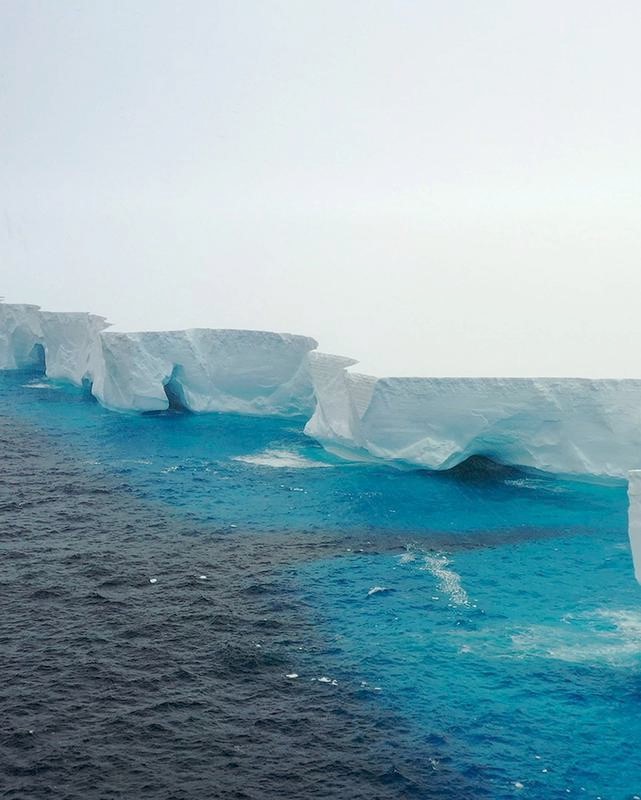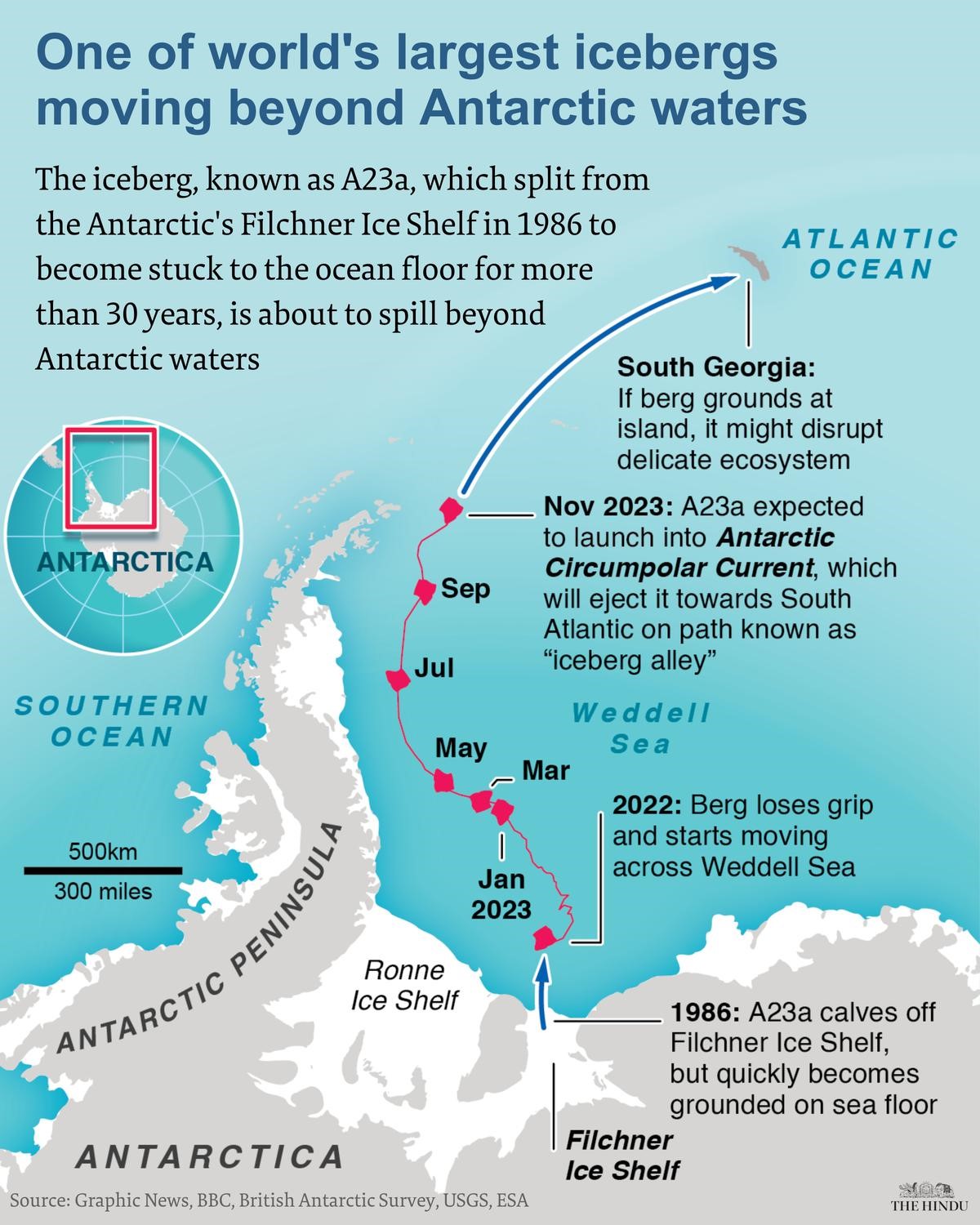Free Courses Sale ends Soon, Get It Now


Free Courses Sale ends Soon, Get It Now



Disclaimer: Copyright infringement not intended.
Context
Details
A23a Iceberg
Movement:

Concern:
Conclusion
In Antarctica the annual loss amounts to only one ten-thousandth of its mass, so the ice sheet is an enormous passive reservoir. However, if losses from iceberg calving and ice-shelf melting are greater than gains from snowfall, global sea levels will rise.
|
PRACTICE QUESTION Q. The term “A23a” often mentioned in news, is related to which of the following? A. Malware B. Operating system C. Celestial body D. Iceberg Answer: D |
© 2024 iasgyan. All right reserved